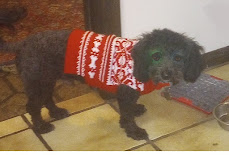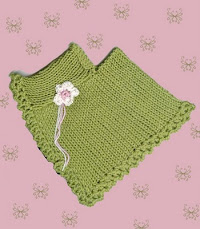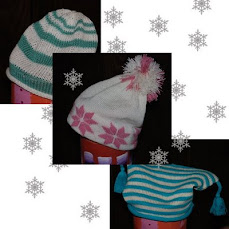Today I'm posting a pattern that you can make to accompany the Baby Ballet sweater. The sweater turned out to be popular with beginning knitters. It didn't require a lot of fancy footwork and when the directions were followed, you ended up with a nice product. That pattern can be accessed by clicking on the picture on the right side of the blog. To complete an outfit, you can knit these pants also.
Machine: kx350,
LK 150, Silver Reed 860 MIDGAUGE MACHINE
Yarn: Sport to lt.worsted, acrylic. If you want to use cotton, knit it into a large rectangle, wash and dry to pre-shrink and wind again.
Other: 19 (20) inches of one inch
wide elastic (allowing for seaming into a circle)
Gauge: T 5 ----5 stitches and 6 rows to 1 inch
Finished sizes: 6 (12) months. Width at seamed tummy area 24 (26) inches
around. Length after cuff and before
waistband 17 (18) inches, width of ankle area 9.2 (10) inches, length after
cuff to crotch 10 (10.5) inches, length from crotch to top before hem 7 (7.5)
inches. If you think you need longer pants for a particular baby, you could
knit more rows on the straight knitting between the crotch and waistband and/or
after the increases and before the crotch bind off.
Directions: Knit two legs the same directions 1 through 3.
1 Hem. Ewrap Cast on 46 (50 ) stitches every other
needle, leaving a long tail for seaming. Hang your cast on comb and some weights. Leave out of work N out of work for the length of the cuff. Knit 18 (18) rows at T 2. Take the cast on comb and weights so you can hang a hem on the empty needles. (Using your one prong tool, hang the beginning stitches onto the empty needles across the bed.)
2 Leg. Hang 2 claw weights again. Bring all needles to work, change to T 5. Start the chart for the size needed. See note below if you need help reading this
kind of chart.
3 Waistband. [Hint: If you find it difficult to see which loop to hang, when you start the waistband, run a different colored yarn along with the main yarn for just this first row of the waistband. To hang, look for the horizontal loops that have this extra color. Remove the extra yarn later.] After you complete the length of the leg indicated by
the chart, transfer every other needle to neighbor and put the emptied needles
out of work for the length of the waistband.
T2 knit 20 rows. Hang a hem from
the loops formed when you switched to every other needle and bind off really loosely. Take a ruler or a hand knitting needle and pull out the mock hem stitches to set
them. Now knit the other leg.
4 Seam. Seam the inner leg (including cuff) with a
mattress stitch, both legs. Match crotch
seams and sew up one tummy seam then the butt seam, including waistband except
for back side of one side of the waistband. You need this open to be able to insert the elastic.
5 Elastic waistband. Don’t
cut yarn tail yet. Insert elastic with a large safety pin, overlap by ½ inch when you get it all the way around and remove safety pin. Sew securely. Finish seaming the knitted back side of waist band with
yarn tail. Hide any yarn tails
remaining.
How to read the DAK-style chart:
Example following the size 6 months. For this particular pattern, first you knit the cuff. Then, 0(46) means you
haven’t knit any rows yet of the leg. Here you'll already have every other needle across left 23 to right 23. Once the cuff is completed, all needles are brought into work. Begin following the shaping directions. Another
Example 31:+1S 4
X 7 means at row counter 31, increase
1 stitch every 4 rows 7 times. (For this
pattern, do a full fashioned increase)
so you would increase both sides one stitch on row counter 31, 35, 39,
43, 47, 51, 55. When the piece is a
mirror image left to right, I just read the one side. If you want, you can write down the row
numbers and check off the decreases or increases on the pattern to help you
remember where you are. Crotch numbers
(rows 59 and 60) should be done opposite of what the chart says because for odd
numbers your carriage is on the left and for even numbers it’s on the
right. You need the carriage on the same
side as you are binding off. I don’t
know why my DAK program does it that way.
Six months:
12 months:
The directions for a full fashioned increase are in the sweater pattern. Do this so that the edges are easy to seam.
Pretty easy, yes? This is a good pattern for charity or a gift. Sell the finished product if you are so inclined. Hope you find this as satisfying as the sweater.






































































